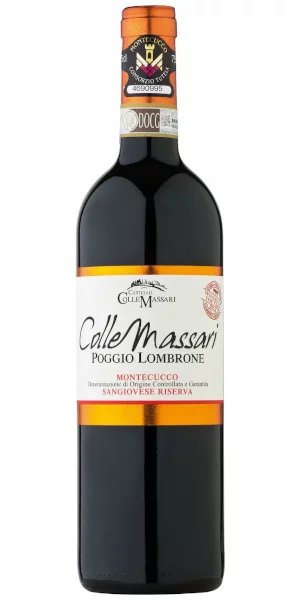ColleMassari Poggio Lombrone Sangiovese Riserva (750ml)
-
Wine Type
Red Wine
-
Size
750ml
-
Vintage
2017
-
Country
Italy
-
Region
Tuscany
-
Sub-Region
Montecucco
-
Grape
Sangiovese
-
Food Pairing
Aged CheeseBeefPasta Dishes
-
Farming Method
OrganicAll of our products that are tagged with the term Organic are either organic certified or organic practicing. Learn More
Sister and brother team Maria Iris and Claudio Tipa brought together their shared passion for nature and great wine with a vision to build a wine business in Tuscany; ColleMassari Wine Estates. ColleMassari comprises some of the most prestigious wineries in Tuscany; Castello Collemassari, in Montecucco, (established in 1998; 120 hectares of vineyards), Grattamacco (2002; 34 hectares of vineyards), one of Bolgheri’s historical wineries, Poggio di Sotto (2011; 20 hectares of vineyards), San Giorgio (2017; 26 hectares of vineyards) in the land of Brunello di Montalcino.
It all began with Castello ColleMassari in 1998. This is part of the Montecucco DOC area in Upper Maremma, a territory which is ideal for the growing of Sangiovese, and situated between the DOCG areas of Brunello di Montalcino and Morellino di Scansano. The first vintage produced was 2000. Over the years, the company’s vineyards and winery holdings expanded to include the above mentioned Tuscan estates.
Tasting Notes
Dark ruby red. Layered and complex bouquet of cherry, violet, baking spice and earth. Full bodied and rich on the palate with lots of concentration ripe red and black fruit, herbs, florals, sweet tobacco, cedar, leather and hinting at a iron-like minerality. Well-balanced dense and velvety tannins and acidity. The finish is long, savory and satisfying. Suggested food pairings include grilled T-bone steak and wagyu beef, cheese, dished with truffle.
Method
Poggio Lombrone is a single-vineyard selection of organically grown Sangiovese from over fifty year old vines grown at an altitude of 300 m above sea level. Yields are low. Grapes are picked manually and the alcoholic fermentation takes place in small conical wooden vats. Malolactic fermentation takes place in 40 hl-oak barrels, in which the wine continues to age for at least a further 18 months.
Finally, the wine ages in bottles for at least another 12 months.


Reviews